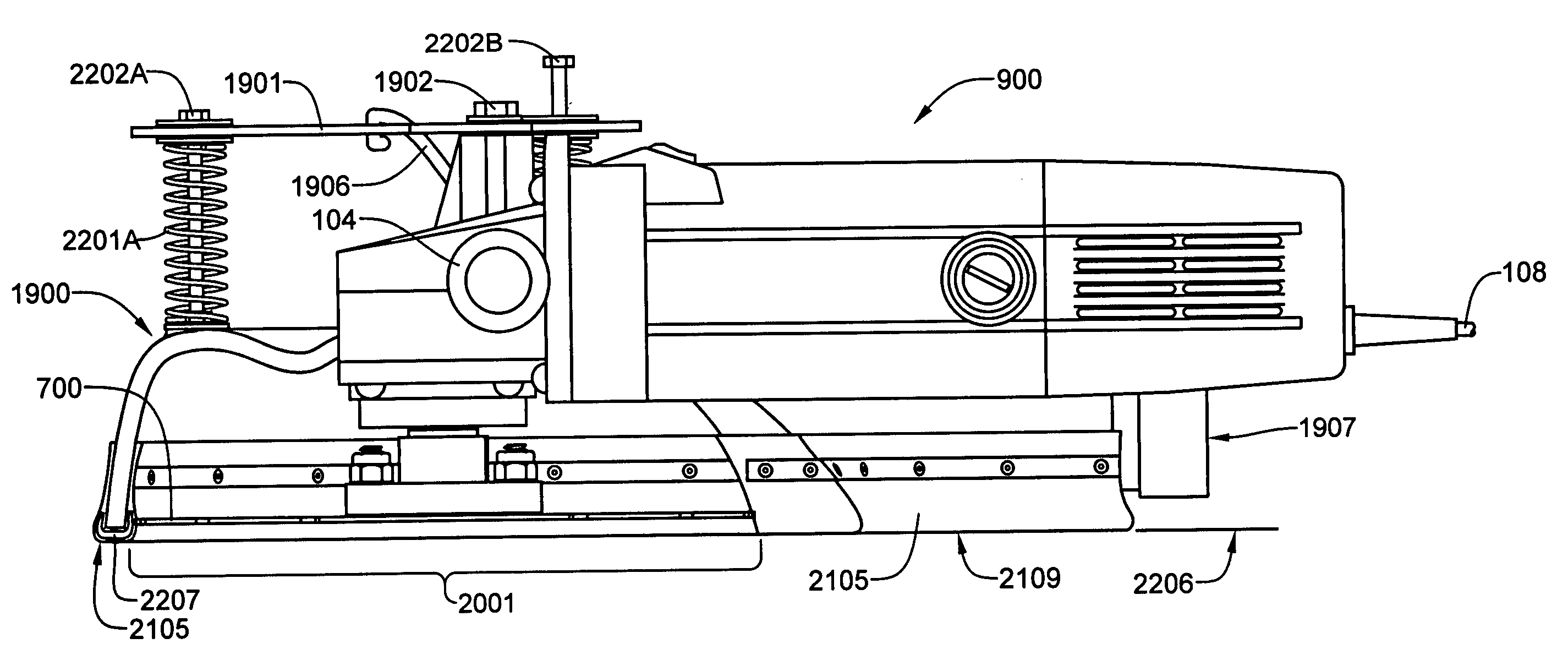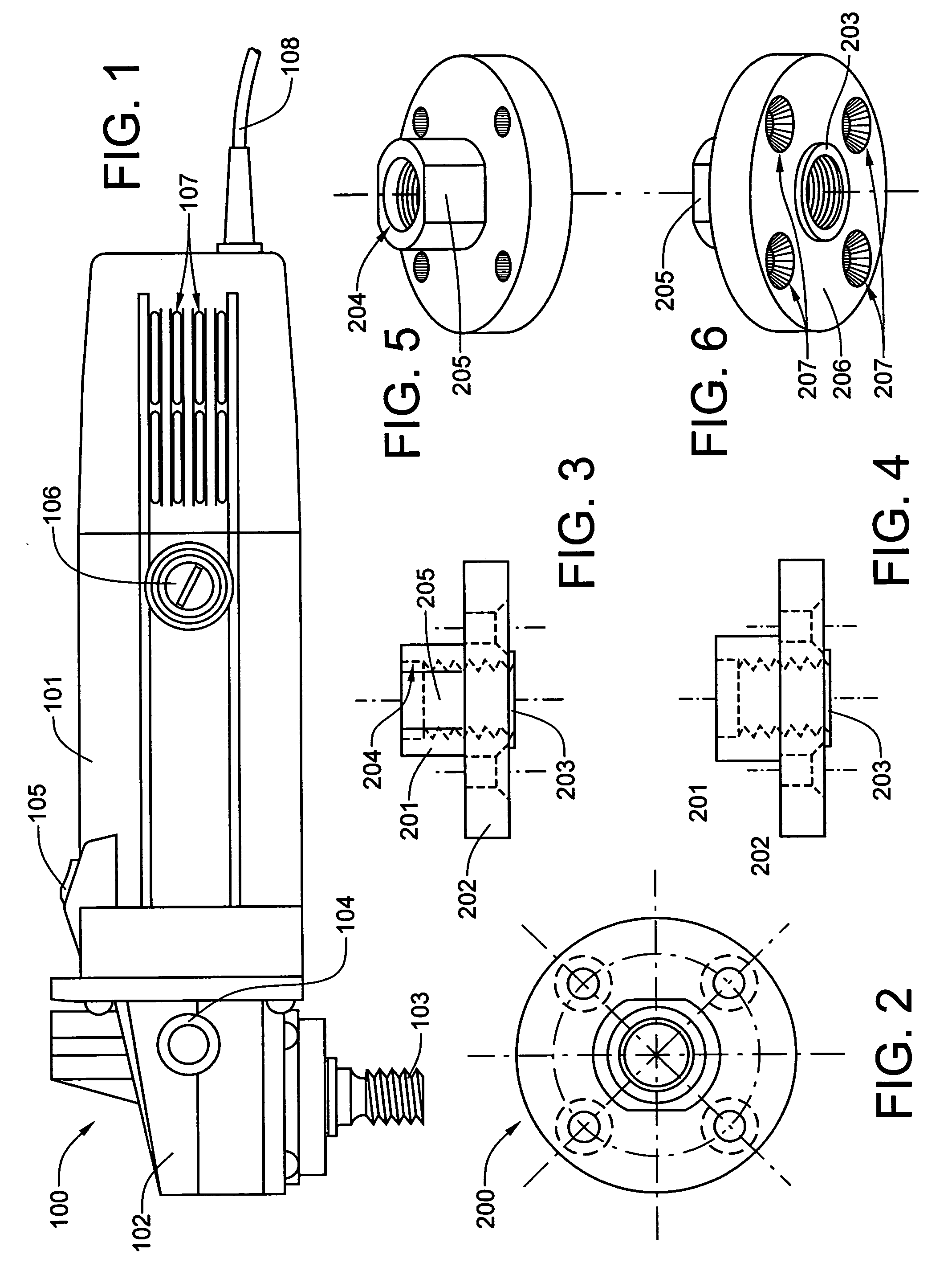Handheld flush-cutting concrete saw having a dust abatement vacuum hood
a technology of dust abatement and vacuum hood, which is applied in the direction of grinding drives, grinding machine components, manufacturing tools, etc., can solve the problems of differential settling of adjacent slabs, unevenness of the joints between the slabs, and uneven sidewalk conditions, so as to prevent the effect of rapid clogging of the internal filter
- Summary
- Abstract
- Description
- Claims
- Application Information
AI Technical Summary
Benefits of technology
Problems solved by technology
Method used
Image
Examples
Embodiment Construction
[0062]The structure and use of a new dust abatement vacuum hood will now be described with reference to drawing FIGS. 19 to 26. It should be understood that the drawings are meant to be merely illustrative of the presently preferred embodiment of the invention, and that they are not necessarily drawn to scale.
[0063]Referring now to FIG. 19, the flush-cutting concrete saw 900 of FIG. 9 is shown adjacent a dust abatement vacuum hood 1901. The edge 703 of blade 700 is formed from a metal matrix which incorporates diamond grit throughout, thereby enabling it, when spinning within a range of about 7 to 10 thousand revolutions per minute, to cut fully-cured concrete with ease. The vacuum hood 1901 has a metal, L-shaped, spring-mounted attachment bracket 1902 that can be bolted directly to the concrete saw 900. An attachment bolt 1903 threadably engages a threaded hole 1904 located on the concrete saw 900 in order to secure the vacuum hood 1901 to the concrete saw 900. The vacuum hood 1901...
PUM
 Login to View More
Login to View More Abstract
Description
Claims
Application Information
 Login to View More
Login to View More - R&D
- Intellectual Property
- Life Sciences
- Materials
- Tech Scout
- Unparalleled Data Quality
- Higher Quality Content
- 60% Fewer Hallucinations
Browse by: Latest US Patents, China's latest patents, Technical Efficacy Thesaurus, Application Domain, Technology Topic, Popular Technical Reports.
© 2025 PatSnap. All rights reserved.Legal|Privacy policy|Modern Slavery Act Transparency Statement|Sitemap|About US| Contact US: help@patsnap.com



